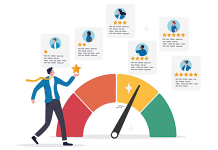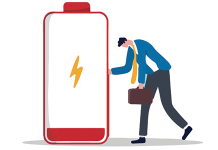Meta, the parent company of Facebook, made headlines in March when it announced it was eliminating the free laundry and dry-cleaning service it had long offered employees, and pushing the start time for free dinners in the company cafeteria to 6:30 p.m. from 6 p.m.
The New York Times reports the new dinner start time was strategically set, as the last company shuttle that takes employees to and from their homes typically leaves Meta HQ at 6 p.m.
The changes at Meta are part of a larger trend in Silicon Valley and beyond of cutbacks in employee perks that were designed to reward workers who put in long hours at the office. Though companies are requiring workers to return to offices, many are acquiescing to high demand for hybrid work models that let employees work remotely a couple days a week or more.
According to the Incentive Research Foundation (IRF), while some daily office perks may be disappearing, employee incentives and rewards are more important than ever due to a willingness by workers to change jobs and the seeming ease that many can find new work. The IRF’s Industry Outlook for 2022 reports that overall incentive budgets are expected to increase by 34% in 2022, with per-person spend increasing to
$806 from $764. Here are some trends the IRF report highlights.
Incentive Travel Is Poised for a Rebound
The resurgence in air travel dating to last summer indicates individuals’ desire to hit the road again.
Business travel remains limited, but vacationers are heading back to both cities and all-inclusive resorts, according to travel industry trackers.
Incentive travel has long topped the list of desirable recognition and reward choices (aside from cash, which is a knee-jerk response when workers are asked how they want to be rewarded). The IRF trends report states the world hasn’t sufficiently emerged from the pandemic to say confidently that people are ready to embrace group incentive travel immediately. In addition, local regulations, variants, supply chain and labor disruptions
make planning and operating events challenging, both for planners and their partners. There is also the matter of some people deciding to not get vaccinated, which could leave them unable to participate in a travel program with venues that demand it. The IRF report predicts these obstacles will eventually disappear.
“Overcommunicating with attendees will help them understand and anticipate what the experience will be like onsite, enhancing their comfort level,” the report states. “Providing attendees with detailed information ahead of the event helps manage expectations and empowers attendees to make decisions for themselves.”
Motivating Remote Workers
Now that they’ve gotten the taste of working from home, many workers don’t want to give it up. Companies are complying with their workers’ desire to not work in the office — at least not all the time.
An IRF report on event alternatives predicts that incentive users will leverage points platforms, choice of merchandise, creative gifting experiences, gift cards and individual or family experiences (including travel) as much or more than they did before the pandemic.
“Well-designed programs will link employee decisions, behaviors and actions to the firm’s pandemic recovery strategy and priorities,” the trends report states. “With a remote workforce, fostering a feeling of connectedness is an important part of any incentive program. Frequency is key to making employees feel like part of the team and encouraging desired behaviors. Frequent, broad-based recognition increasingly includes rewards of token tangible value, but high social
value — such as in points or spot reward programs offering travel, merchandise, gift cards, time off and other items.”
Increased Importance of Personalization “Participants experience greater personalization based on their individual preferences in day-to-day shopping experiences, and they expect the same from their incentive programs. This permeates into all solutions and capabilities, including points programs, travel, events, recognition, rule structures, and communications,” the IRF trends report states.
A key to effective personalization of employee reward programs is data collection. Capturing worker profiles, preferences and behavioral information is a must. Program sponsors are collecting and analyzing participant data through their recognition portals, event registration platforms and surveys.
Supply Chain Delays Persist
Like much of commerce globally, incentive programs have been impacted by compression of hotel inventory, availability of merchandise, price increases and a reduced workforce. This can negatively impact program profitability and the overall participant experience.
Communication with vendors, suppliers and partners is critical to knowing merchandise availability and realistic delivery times. This may impact a decision to move forward with a program or delay the timing.
Incentive program owners would be wise to communicate candidly with program participants and help set expectations. Honesty is the best policy, and usually increases participant understanding when hiccups occur.





